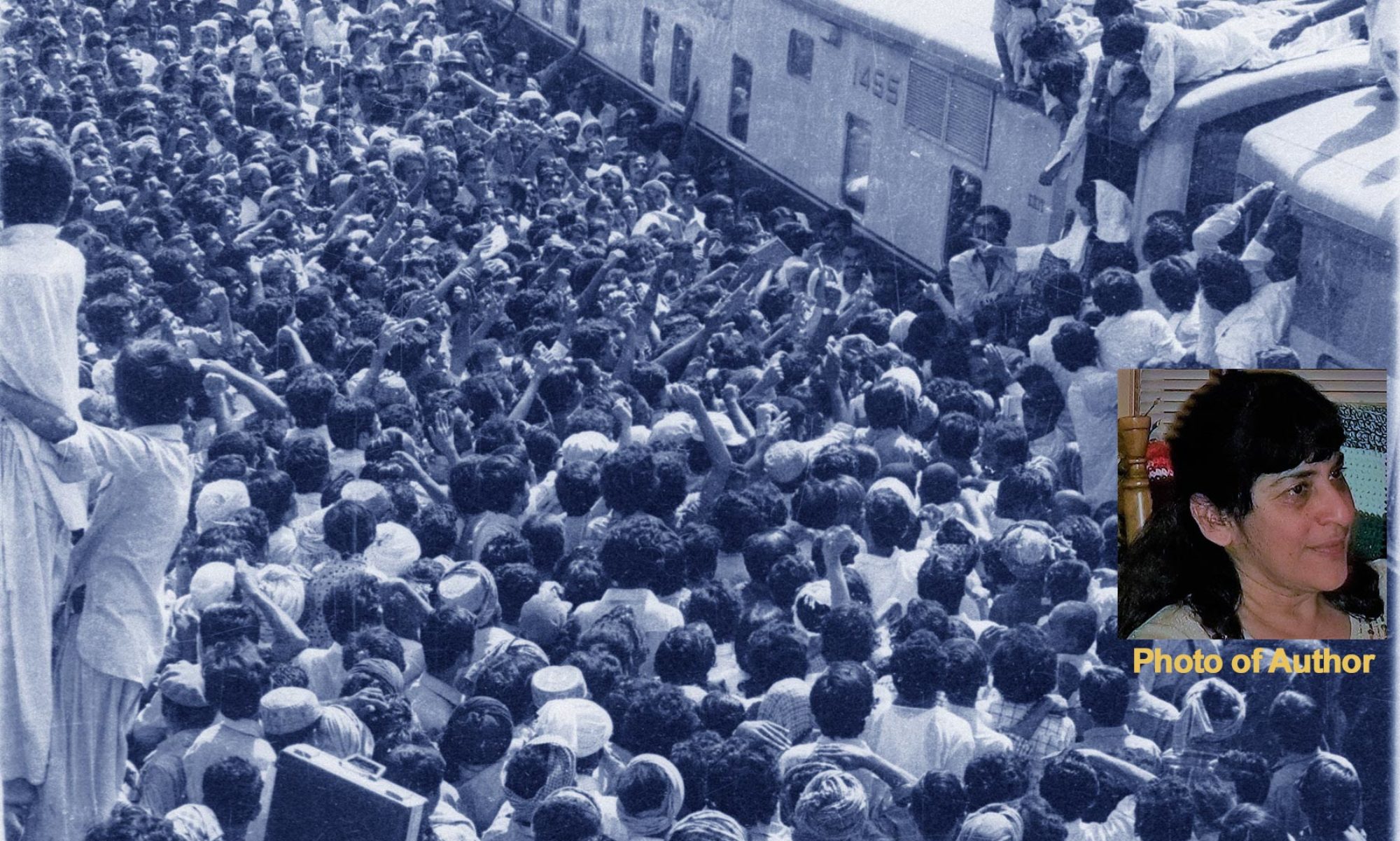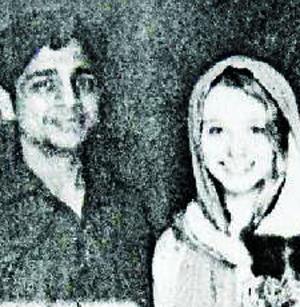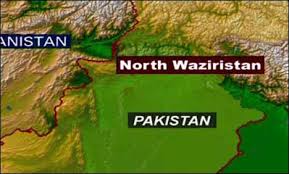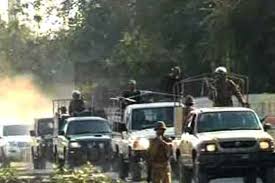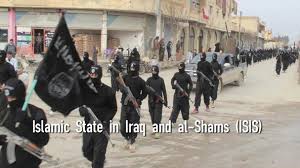
(Credit: csmonitor.com)
Shortly after the Sept. 11 attacks, I went to live and report for The New York Times in Afghanistan. I would spend most of the next 12 years there, following the overthrow of the Taliban, feeling the excitement of the freedom and prosperity that was promised in its wake and then watching the gradual dissolution of that hope. A new Constitution and two rounds of elections did not improve the lives of ordinary Afghans; the Taliban regrouped and found increasing numbers of supporters for their guerrilla actions; by 2006, as they mounted an ambitious offensive to retake southern Afghanistan and unleashed more than a hundred suicide bombers, it was clear that a deadly and determined opponent was growing in strength, not losing it. As I toured the bomb sites and battlegrounds of the Taliban resurgence, Afghans kept telling me the same thing: The organizers of the insurgency were in Pakistan, specifically in the western district of Quetta. Police investigators were finding that many of the bombers, too, were coming from Pakistan.
In December 2006, I flew to Quetta, where I met with several Pakistani reporters and a photographer. Together we found families who were grappling with the realization that their sons had blown themselves up in Afghanistan. Some were not even sure whether to believe the news, relayed in anonymous phone calls or secondhand through someone in the community. All of them were scared to say how their sons died and who recruited them, fearing trouble from members of the ISI, Pakistan’s main intelligence service.
After our first day of reporting in Quetta, we noticed that an intelligence agent on a motorbike was following us, and everyone we interviewed was visited afterward by ISI agents. We visited a neighborhood called Pashtunabad, “town of the Pashtuns,” a close-knit community of narrow alleys inhabited largely by Afghan refugees who over the years spread up the hillside, building one-story houses from mud and straw. The people are working class: laborers, bus drivers and shopkeepers. The neighborhood is also home to several members of the Taliban, who live in larger houses behind high walls, often next to the mosques and madrasas they run.
The small, untidy entrance on the street to one of those madrasas, the Jamiya Islamiya, conceals the size of the establishment. Inside, a brick-and-concrete building three stories high surrounds a courtyard, and classrooms can accommodate 280 students. At least three of the suicide bombers we were tracing had been students here, and there were reports of more. Senior figures from Pakistani religious parties and provincial-government officials were frequent visitors, and Taliban members would often visit under the cover of darkness in fleets of S.U.V.s.
We requested an interview and were told that a female journalist would not be permitted inside, so I passed some questions to the Pakistani reporter with me, and he and the photographer went in. The deputy head of the madrasa denied that there was any militant training there or any forced recruitment for jihad. “We are educating the students in the Quran, and in the Quran it is written that it is every Muslim’s obligation to wage jihad,” he said. “All we are telling them is what is in the Quran. Then it is up to them to go to jihad.” He ended the conversation. Classes were breaking up, and I could hear a clamor rising as students burst out of their classrooms. Boys poured out of the gates onto the street. They looked spindly, in flapping clothes and prayer caps, as they darted off on their bikes and on foot, chasing one another down the street.
The reporter and the photographer joined me outside. They told me that words of praise were painted across the wall of the inner courtyard for the madrasa’s political patron, a Pakistani religious-party leader, and the Taliban leader Mullah Muhammad Omar. This madrasa, like so many in Pakistan, was a source of the Taliban resurgence that President Hamid Karzai and other Afghan leaders had long been warning about. In this nondescript madrasa in a poor neighborhood of Quetta, one of hundreds throughout the border region, the Taliban and Pakistan’s religious parties were working together to raise an army of militants.
“The madrasas are a cover, a camouflage,” a Pashtun legislator from the area told me. Behind the curtain, hidden in the shadows, lurked the ISI.
The Pakistani government, under President Pervez Musharraf and his intelligence chief, Lt. Gen. Ashfaq Parvez Kayani, was maintaining and protecting the Taliban, both to control the many groups of militants now lodged in the country and to use them as a proxy force to gain leverage over and eventually dominate Afghanistan. The dynamic has played out in ways that can be hard to grasp from the outside, but the strategy that has evolved in Pakistan has been to make a show of cooperation with the American fight against terrorism while covertly abetting and even coordinating Taliban, Kashmiri and foreign Qaeda-linked militants. The linchpin in this two-pronged and at times apparently oppositional strategy is the ISI. It’s through that agency that Pakistan’s true relationship to militant extremism can be discerned — a fact that the United States was slow to appreciate, and later refused to face directly, for fear of setting off a greater confrontation with a powerful Muslim nation.
On our fifth and last day in Quetta, four plainclothes agents detained my photographer colleague at his hotel. They seized his computer and photo equipment and brought him to the parking lot of the hotel where I was staying. There they made him call and ask me to come down to talk to them. “I’m in trouble here,” he told me. It was after dark. I did not want to go down to the parking lot, but I told my colleague I would get help. I alerted my editor in New York and then tried to call Pakistani officials.
Before I could reach them, the agents broke through the door of my hotel room. The lintel splintered, and they burst in in a rush, snatching my laptop from my hands. There was an English-speaking officer wearing a smart new khaki-colored fleece. The other three, one of whom had the photographer in tow, were the muscle.
They went through my clothes and seized my notebooks and a cellphone. When one of the men grabbed my handbag, I protested. He punched me twice, hard, in the face and temple, and I fell back onto the coffee table, grabbing at the officer’s fleece to break my fall and smashing some cups when I landed. For a moment it was funny. I remember thinking it was just like a hotel-room bust-up in the movies.
Continue reading the main story
Continue reading the main story
Then I flew into a rage, berating them for barging into a woman’s bedroom and using physical violence. The officer told me that I was not permitted to visit the neighborhood of Pashtunabad and that it was forbidden to interview members of the Taliban. As they were leaving, I said the photographer had to stay with me. “He is Pakistani,” the officer said. “We can do with him whatever we want.” I knew they were capable of torture and murder, especially in Quetta, where the security services were a law unto themselves. The story they didn’t want out in the open was the government’s covert support for the militant groups that were propagating terrorism in Afghanistan and beyond.
Six months later, Pakistan blew up. In the spring of 2007 in Islamabad, female students from a madrasa attached to the Red Mosque were staging a sit-in to protest the demolition of several illegal mosques in the city. The Red Mosque stood at the center of Pakistan’s support for jihad in Afghanistan and throughout the Muslim world. It was founded by a famed jihadi preacher, Maulana Muhammad Abdullah, who was assassinated in 1998, not long after he visited Osama bin Laden in Afghanistan. Al Qaeda blamed the killing on the Pakistani government at the time.
Abdullah’s sons inherited the mosque and continued its extremist teachings. The eldest, Maulana Abdul Aziz, delivered fiery Friday sermons excoriating Musharraf for his public stance on the fight against terrorism and his dealings with the American government. Despite an earlier reputation as a nonreligious bureaucrat, the younger brother, Abdul Rashid Ghazi, spoke of undergoing a conversion after his father’s death and a meeting with Bin Laden, and by 2007 he would not leave the Red Mosque compound for fear of arrest. He warned that ranks of suicide bombers would retaliate if the government moved against the student protesters.
With such leaders behind them, the students began staging vigilante actions in the streets. They were radical and obsessive, vowing to die rather than give up their protest. The government’s inaction only encouraged them. Several months after the protest began, a group of students made a midnight raid on a massage parlor and abducted several Chinese women.
Remonstrations from China, Pakistan’s most important regional ally, pushed Musharraf to take action. Pakistani Army rangers occupied a school across the street, and police officers and soldiers moved in to surround the mosque on July 3. Armed fighters appeared from the mosque, carrying rockets and assault rifles and taking up sandbagged positions on the mosque walls. Loudspeakers told the students that this was the time for bravery. A female student took over the microphone. “Allah, where is your help?” she asked in a quavering voice. “Destroy the enemies. Tear their hearts apart. Throw fireballs on them.”
Islamabad is a green, tranquil home for civil servants and diplomats, but for several days it resounded with gunfire and explosions. Crowds of worried parents arrived from all over the country to try to retrieve their children. The Red Mosque leaders tried to make the students stay. “They said if the women and others die, the people will take their side,” one father told me, and I realized then how premeditated this all was, how the girls were pawns in their plan to spark a revolution.
A week after the siege began, there was a ferocious battle. Elite Pakistani commandos rappelled from helicopters into the mosque and were raked with machine-gun fire. Perched in the mosque’s minarets and throughout its 75 rooms, the militants fought for 10 hours. They hurled grenades from bunkers and basements, and suicide bombers threw themselves at their attackers. The commandos found female students hiding in a bricked-up space beneath the stairs and led 50 women and girls to safety. Ghazi retreated to a basement in the compound. He died there as the last surviving fighters battled around him.
More than 100 people were killed in the siege, including 10 commandos. The ISI — despite having a long relationship with the mosque and its leaders, as well as two informers inside providing intelligence — played a strangely ineffective role. In a cabinet meeting after the siege, ministers questioned a senior ISI official about the intelligence service’s failure to prevent the militant action. “Who I meet in the evening and what I discuss is on your desk the next morning,” one minister told the official. “How come you did not know what was happening a hundred meters from the ISI headquarters?” The official sat in silence as ministers thumped their desks in a gesture of agreement.
“One hundred percent they knew what was happening,” a former cabinet minister who attended the meeting told me. The ISI allowed the militants to do what they wanted out of sympathy, he said. “The state is not as incompetent as people believe.”
The Pakistani military faced an immediate and vicious backlash. In the months that followed, there were strikes against convoys of soldiers in the northwest and a wave of suicide bombings against government, military and civilian targets throughout the country, including the army’s headquarters and the main ISI compound in Rawalpindi. After years of nurturing jihadists to fight its proxy wars, Pakistan was now experiencing the repercussions. “We could not control them,” a former senior intelligence official told a colleague and me six months after the Red Mosque siege.
Yet even as the militants were turning against their masters, Pakistan’s generals still sought to use them for their own purpose, most notoriously targeting Pakistan’s first female prime minister, Benazir Bhutto, who was preparing to fly home from nearly a decade in exile in the fall of 2007. Bhutto had forged a deal with Musharraf that would allow him to resign as army chief but run for another term as president, while clearing the way for her to serve as prime minister. Elections were scheduled for early 2008.
Bhutto had spoken out more than any other Pakistani politician about the dangers of militant extremism. She blamed foreign militants for annexing part of Pakistan’s territory and called for military operations into Waziristan. She declared suicide bombing un-Islamic and seemed to be challenging those who might target her. “I do not believe that any true Muslim will make an attack on me because Islam forbids attacks on women, and Muslims know that if they attack a woman, they will burn in hell,” she said on the eve of her return.
She also promised greater cooperation with Afghanistan and the United States in combating terrorism and even suggested in an interview that she would give Western officials access to the man behind Pakistan’s program of nuclear proliferation, A. Q. Khan.
President Karzai of Afghanistan warned Bhutto that his intelligence service had learned of threats against her life. Informers had told the Afghans of a meeting of army commanders — Musharraf and his 10 most-powerful generals — in which they discussed a militant plot to have Bhutto killed.
On Oct. 18, 2007, Bhutto flew into Karachi. I was one of a crowd of journalists traveling with her. She wore religious amulets and offered prayers as she stepped onto Pakistani soil. Hours later, as she rode in an open-top bus through streets of chanting supporters, two huge bombs exploded, tearing police vans, bodyguards and party followers into shreds. Bhutto survived the blast, but some 150 people died, and 400 were injured.
Bhutto claimed that Musharraf had threatened her directly, and Karzai again urged her to take more precautions, asking his intelligence service to arrange an armored vehicle for her equipped with jammers to block the signals of cellphones, which are often used to detonate bombs. In the meantime, Bhutto pressed on with her campaign, insisting on greeting crowds of supporters from the open top of her vehicle.
In late December, a group of militants, including two teenage boys trained and primed to commit suicide bombings, arrived at the Haqqania madrasa in the northwestern town of Akora Khattak. The madrasa is a notorious establishment, housing 3,000 students in large, whitewashed residence blocks. Ninety-five percent of the Taliban fighting in Afghanistan have passed through its classrooms, a spokesman for the madrasa proudly told me. Its most famous graduate is Jalaluddin Haqqani, a veteran Afghan mujahedeen commander whose network has become the main instrument for ISI-directed attacks in Kabul and eastern Afghanistan.
The two young visitors who stopped for a night at the madrasa were escorted the next day to Rawalpindi, where Bhutto would be speaking at a rally on Dec. 27. As her motorcade left the rally, it slowed so she could greet supporters in the street. One of the two teenagers fired a pistol at her and then detonated his vest of explosives. Bhutto was standing in the roof opening of an armored S.U.V. She ducked into the vehicle at the sound of the gunfire, but the explosion threw the S.U.V. forward, slamming the edge of the roof hatch into the back of her head with lethal force. Bhutto slumped down into the vehicle, mortally wounded, and fell into the lap of her confidante and constant chaperone, Naheed Khan.
As Bhutto had long warned, a conglomeration of opponents wanted her dead and were all linked in some way. They were the same forces behind the insurgency in Afghanistan: Taliban and Pakistani militant groups and Al Qaeda, as well as the Pakistani military establishment, which included the top generals, Musharraf and Kayani. A United Nations Commission of Inquiry into the circumstances of Bhutto’s death found that each group had a motive and merited investigation.
Pakistani prosecutors later indicted Musharraf on charges of being part of a wider conspiracy to remove Bhutto from the political scene. There was “overwhelming circumstantial evidence” that he did not provide her with adequate security because he wanted to ensure her death in an inevitable assassination attempt, the chief state prosecutor in her murder trial, Chaudhry Zulfiqar Ali, told me. (Musharraf denied the accusations.) A hard-working, hard-charging man, Ali succeeded in having Musharraf arrested and was pushing to speed up the trial when he was shot to death on his way to work in May 2013.
Ali had no doubts that the mastermind of the plot to kill Bhutto was Al Qaeda. “It was because she was pro-American, because she was a strong leader and a nationalist,” he told me. A Pakistani security official who interviewed some of the suspects in the Bhutto case and other militants detained in Pakistan’s prisons came to the same conclusion. The decision to assassinate Bhutto was made at a meeting of the top council of Al Qaeda, the official said.
It took more than three years before the depth of Pakistan’s relationship with Al Qaeda was thrust into the open and the world learned where Bin Laden had been hiding, just a few hundred yards from Pakistan’s top military academy. In May 2011, I drove with a Pakistani colleague down a road in Abbottabad until we were stopped by the Pakistani military. We left our car and walked down a side street, past several walled houses and then along a dirt path until there it was: Osama bin Laden’s house, a three-story concrete building, mostly concealed behind concrete walls as high as 18 feet, topped with rusting strands of barbed wire. This was where Bin Laden hid for nearly six years, and where, 30 hours earlier, Navy SEAL commandos shot him dead in a top-floor bedroom.
After a decade of reporting in Afghanistan and Pakistan and tracking Bin Laden, I was fascinated to see where and how he hid. He had dispensed with the large entourage that surrounded him in Afghanistan. For nearly eight years, he relied on just two trusted Pakistanis, whom American investigators described as a courier and his brother.
People knew that the house was strange, and one local rumor had it that it was a place where wounded Taliban from Waziristan recuperated. I was told this by Musharraf’s former civilian intelligence chief, who had himself been accused of having a hand in hiding Bin Laden in Abbottabad. He denied any involvement, but he did not absolve local intelligence agents, who would have checked the house. All over the country, Pakistan’s various intelligence agencies — the ISI, the Intelligence Bureau and Military Intelligence — keep safe houses for undercover operations. They use residential houses, often in quiet, secure neighborhoods, where they lodge people for interrogation or simply enforced seclusion. Detainees have been questioned by American interrogators in such places and sometimes held for months. Leaders of banned militant groups are often placed in protective custody in this way. Others, including Taliban leaders who took refuge in Pakistan after their fall in Afghanistan in 2001, lived under a looser arrangement, with their own guards but also known to their Pakistani handlers, former Pakistani officials told me. Because of Pakistan’s long practice of covertly supporting militant groups, police officers — who have been warned off or even demoted for getting in the way of ISI operations — have learned to leave such safe houses alone.
The split over how to handle militants is not just between the ISI and the local police; the intelligence service itself is compartmentalized. In 2007, a former senior intelligence official who worked on tracking members of Al Qaeda after Sept. 11 told me that while one part of the ISI was engaged in hunting down militants, another part continued to work with them.
Soon after the Navy SEAL raid on Bin Laden’s house, a Pakistani official told me that the United States had direct evidence that the ISI chief, Lt. Gen. Ahmed Shuja Pasha, knew of Bin Laden’s presence in Abbottabad. The information came from a senior United States official, and I guessed that the Americans had intercepted a phone call of Pasha’s or one about him in the days after the raid. “He knew of Osama’s whereabouts, yes,” the Pakistani official told me. The official was surprised to learn this and said the Americans were even more so. Pasha had been an energetic opponent of the Taliban and an open and cooperative counterpart for the Americans at the ISI. “Pasha was always their blue-eyed boy,” the official said. But in the weeks and months after the raid, Pasha and the ISI press office strenuously denied that they had any knowledge of Bin Laden’s presence in Abbottabad.
Colleagues at The Times began questioning officials in Washington about which high-ranking officials in Pakistan might also have been aware of Bin Laden’s whereabouts, but everyone suddenly clammed up. It was as if a decision had been made to contain the damage to the relationship between the two governments. “There’s no smoking gun,” officials in the Obama administration began to say.
The haul of handwritten notes, letters, computer files and other information collected from Bin Laden’s house during the raid suggested otherwise, however. It revealed regular correspondence between Bin Laden and a string of militant leaders who must have known he was living in Pakistan, including Hafiz Muhammad Saeed, the founder of Lashkar-e-Taiba, a pro-Kashmiri group that has also been active in Afghanistan, and Mullah Omar of the Taliban. Saeed and Omar are two of the ISI’s most important and loyal militant leaders. Both are protected by the agency. Both cooperate closely with it, restraining their followers from attacking the Pakistani state and coordinating with Pakistan’s greater strategic plans. Any correspondence the two men had with Bin Laden would probably have been known to their ISI handlers.
Bin Laden did not rely only on correspondence. He occasionally traveled to meet aides and fellow militants, one Pakistani security official told me. “Osama was moving around,” he said, adding that he heard so from jihadi sources. “You cannot run a movement without contact with people.” Bin Laden traveled in plain sight, his convoys always knowingly waved through any security checkpoints.
In 2009, Bin Laden reportedly traveled to Pakistan’s tribal areas to meet with the militant leader Qari Saifullah Akhtar. Informally referred to as the “father of jihad,” Akhtar is considered one of the ISI’s most valuable assets. According to a Pakistani intelligence source, he was the commander accused of trying to kill Bhutto on her return in 2007, and he is credited with driving Mullah Omar out of Afghanistan on the back of a motorbike in 2001 and moving Bin Laden out of harm’s way just minutes before American missile strikes on his camp in 1998. After the Sept. 11 attacks, he was detained several times in Pakistan. Yet he was never prosecuted and was quietly released each time by the ISI.
At his meeting with Bin Laden in August 2009, Akhtar is reported to have requested Al Qaeda’s help in mounting an attack on the Pakistani army headquarters in Rawalpindi. Intelligence officials learned about the meeting later that year from interrogations of men involved in the attack. Information on the meeting was compiled in a report seen by all of the civilian and military intelligence agencies, security officials at the Interior Ministry and American counterterrorism officials.
At the meeting, Bin Laden rejected Akhtar’s request for help and urged him and other militant groups not to fight Pakistan but to serve the greater cause — the jihad against America. He warned against fighting inside Pakistan because it would destroy their home base: “If you make a hole in the ship, the whole ship will go down,” he said.
He wanted Akhtar and the Taliban to accelerate the recruitment and training of fighters so they could trap United States forces in Afghanistan with a well-organized guerrilla war. Bin Laden said that Afghanistan, Pakistan, Somalia and the Indian Ocean region would be Al Qaeda’s main battlefields in the coming years, and that he needed more fighters from those areas. He even offered naval training for militants, saying that the United States would soon exit Afghanistan and that the next war would be waged on the seas.
Akhtar, in his mid-50s, remains at large in Pakistan. He is still active in jihadi circles and in running madrasas — an example of a militant commander whom the ISI has struggled to control yet is too valuable for them to lock up or eliminate.
In trying to prove that the ISI knew of Bin Laden’s whereabouts and protected him, I struggled for more than two years to piece together something other than circumstantial evidence and suppositions from sources with no direct knowledge. Only one man, a former ISI chief and retired general, Ziauddin Butt, told me that he thought Musharraf had arranged to hide Bin Laden in Abbottabad. But he had no proof and, under pressure, claimed in the Pakistani press that he’d been misunderstood. Finally, on a winter evening in 2012, I got the confirmation I was looking for. According to one inside source, the ISI actually ran a special desk assigned to handle Bin Laden. It was operated independently, led by an officer who made his own decisions and did not report to a superior. He handled only one person: Bin Laden. I was sitting at an outdoor cafe when I learned this, and I remember gasping, though quietly so as not to draw attention. (Two former senior American officials later told me that the information was consistent with their own conclusions.) This was what Afghans knew, and Taliban fighters had told me, but finally someone on the inside was admitting it. The desk was wholly deniable by virtually everyone at the ISI — such is how supersecret intelligence units operate — but the top military bosses knew about it, I was told.
America’s failure to fully understand and actively confront Pakistan on its support and export of terrorism is one of the primary reasons President Karzai has become so disillusioned with the United States. As American and NATO troops prepare to withdraw from Afghanistan by the end of this year, the Pakistani military and its Taliban proxy forces lie in wait, as much a threat as any that existed in 2001.
In January 2013, I visited the Haqqania madrasa to speak with senior clerics about the graduates they were dispatching to Afghanistan. They agreed to let me interview them and gave the usual patter about it being each person’s individual choice to wage jihad. But there was also continuing fanatical support for the Taliban. “Those who are against the Taliban, they are the liberals, and they only represent 5 percent of Afghans,” the spokesman for the madrasa told me. He and his fellow clerics were set on a military victory for the Taliban in Afghanistan. Moreover, he said, “it is a political fact that one day the Taliban will take power. The white flag of the Taliban will fly again over Kabul, inshallah.”
Pakistani security officials, political analysts, journalists and legislators warned of the same thing. The Pakistani military was still set on dominating Afghanistan and was still determined to use the Taliban to exert influence now that the United States was pulling out.
Kathy Gannon of The Associated Press reported in September that militants from Punjab, Pakistan’s most populous province, were massing in the tribal areas to join the Taliban and train for an anticipated offensive into Afghanistan this year. In Punjab, mainstream religious parties and banned militant groups were openly recruiting hundreds of students for jihad, and groups of young men were being dispatched to Syria to wage jihad there. “They are the same jihadi groups; they are not 100 percent under control,” a former Pakistani legislator told me. “But still the military protects them.”
The United States was neither speaking out against Pakistan nor changing its policy toward a government that was exporting terrorism, the legislator lamented. “How many people have to die before they get it? They are standing by a military that protects, aids and abets people who are going against the U.S. and Western mission in Afghanistan, in Syria, everywhere.”
When I remember the beleaguered state of Afghanistan in 2001, I marvel at the changes the American intervention has fostered: the rebuilding, the modernity, the bright graduates in every office. Yet after 13 years, more than a trillion dollars spent, 120,000 foreign troops deployed at the height of the war and tens of thousands of lives lost, Afghanistan’s predicament has not changed: It remains a weak state, prey ambitions of its neighbors and extremist Islamists. This is perhaps an unpopular opinion, but to pull out now is, undeniably, to leave with the job only half-done.
Meanwhile, the real enemy remains at large.
